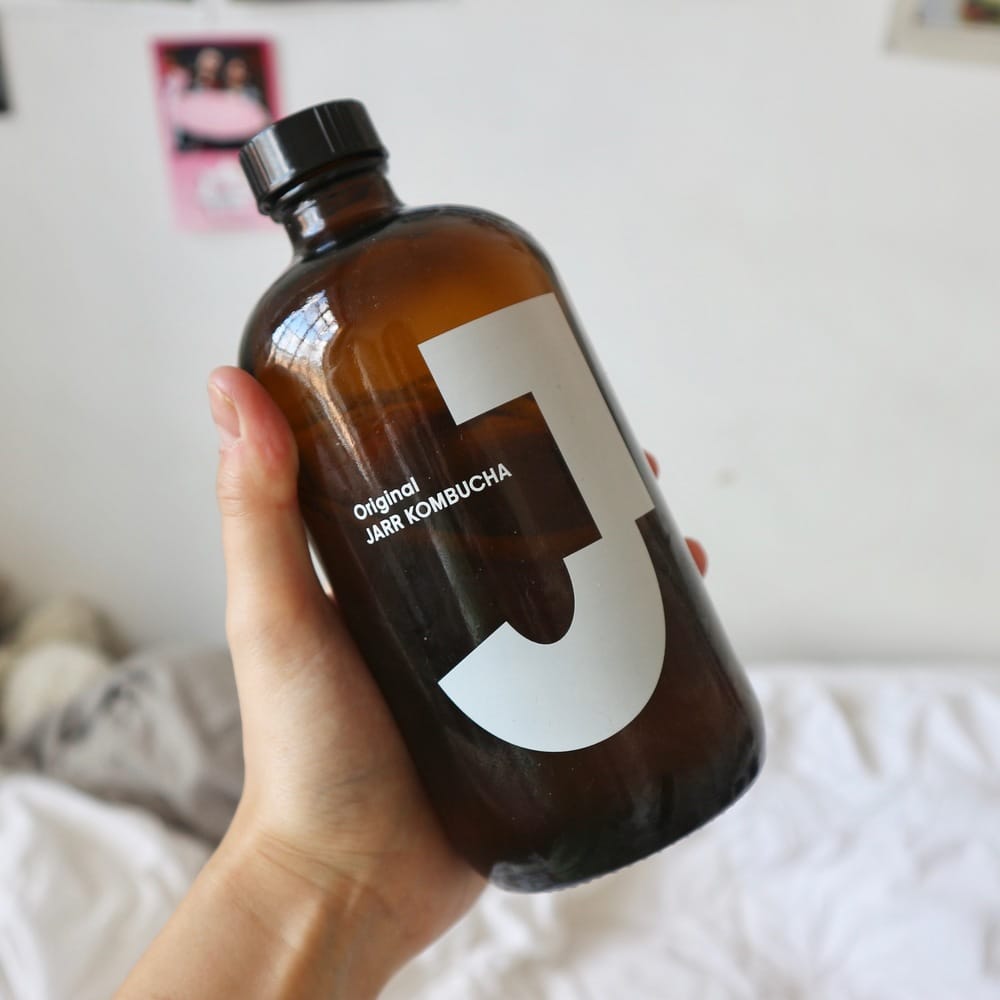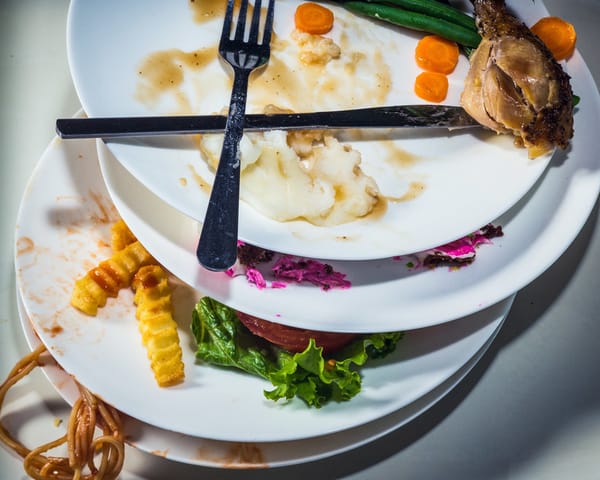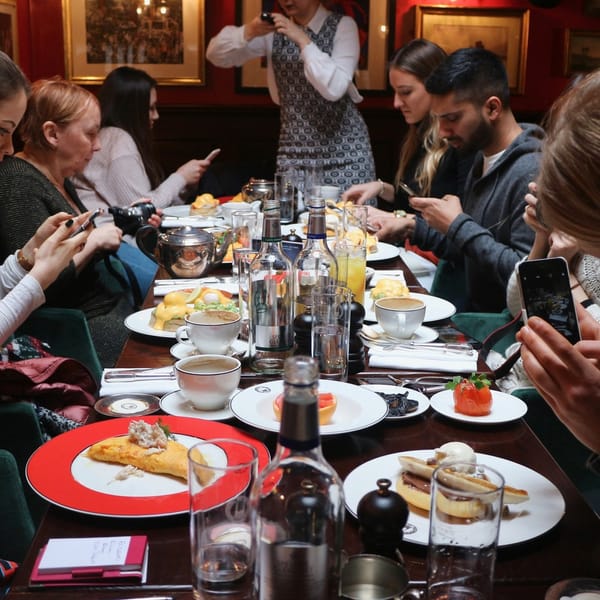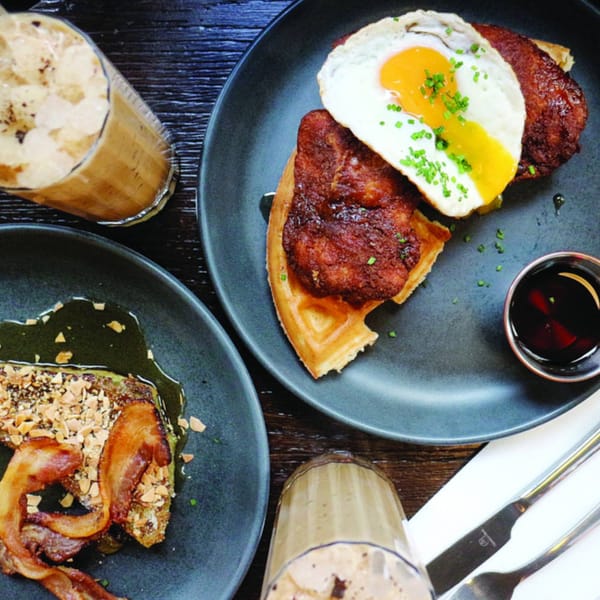Kombucha Kraft
felix boldly uses the lab experience acquired at this noble institution to probe the depths of SCOBYs, tea and Kombucha. Is it the elixir we’ve all been looking for, or just a another fad? More importantly, will it be drinkable at the end of it all? Place your bets, and read on.

I try to be healthy. Sometimes. You see, when you have to sustain a food blog full of cakes and ice creams and burgers and doughnuts, you have to find a way to balance it out. And luckily for me, the healthy food world is not limited to chomping my way through an iceberg lettuce for dinner while balancing on a yoga mat (which recently transformed into a neglected, pink rolled-up piece of plastic gathering dust in the corner). So far, I’ve tried most of the #eatclean superfoods suggested by the lovely vegans on Instagram, including chia seed puddings, quinoa and kale.
But I simply wasn’t liking them, from my mind, my body to my soul. My mouth hated the blandness and slimy texture of the chia seeds. Quinoa was getting a tad steep for my wallet, and I couldn’t be bothered to look after it on the stove to get that “fluffy” texture without burning the bottom. Kale gave me horrible indigestion (Ok, fine, I was trying to demolish 1 kg of kale in a day before its expiry date).
After all those clean eating failures, I got hooked up to my next new fad: kombucha. Kombucha is apparently known as the “immortal health elixir” by the Chinese and has been around for over 2000 years. (Weird. I’m Chinese and I’ve never heard of it in the last 20 years until 2 months ago on some food blog.) It’s basically a fermented, sweetened, tea drink produced using a SCOBY. And SCOBY stands for “symbiotic colony of bacteria and yeast”. The SCOBY is mainly formed from Saccharomyces, a probiotic fungus, and Gluconacetobacter xylinus, the bacteria. It claims to have amazing health benefits, such as treating AIDS, cancer, diabetes, all the way to boosting the libido (Oh yeah). In the mouth, it tastes sweet with noticeable acidity and a bit of fizz.
Despite being another one of those new health fads, they come in an approachable price tag and actually cheaper than your daily Starbucks. Hmm, perhaps it’s a good idea to start swapping your Coke or iced tea to this exciting concoction. I also did a bit of Googling and found that you can actually grow your own kombucha SCOBY from a shop-bought bottle. And from that SCOBY comes a lifetime of kombucha (you’ll see how it works in a sec).
So, with my natural cheapo identity, thumping curiosity and that love for experimentation, I gave in and bought a bottle of raw, unfiltered, unpasteurized, original-flavour kombucha from Wholefoods. I poured myself a glass – it tasted like diluted vinegar. I carefully closed the bottle. Lab coat. Check. Goggles. Check. Hair. Check. Risk assessment. Check. Let the brewing begin. The first step of creating this self-sufficient supply of kombucha is growing the SCOBY. The bacteria and yeast in the SCOBY survives on the minerals, nitrates and sugar in the sweet tea. Where to find the microorganisms? From that shop-bought bottle of kombucha, of course. But make sure it’s raw and unflavoured to get all the good stuff. We’ll call this “starter tea” from now. Your success depends on the choice of tea: choose plain black or green tea, with the best being the trusty English Breakfast. Avoid flavoured teas such as Earl Grey as the oils in them will destroy the colony. The sugar you use is also important – plain white cane sugar gives the best results while the impurities in brown sugar or sugar alternatives are also likely to destroy the microorganisms. Make sure the jars and pots you use are sterilized with boiling water, not soap or alcohol.
I added four tablespoons of sugar to a cup of boiling water, chucking in three teaspoons of loose leaf Oolong tea and let it steep for 20 minutes. When the tea has cooled down, I poured the tea and the “starter tea” into a sterilized glass jar in the ratio of 7:1. I covered the jar with a paper towel, secured it to the brim with an elastic band and left it in a dark corner in the cupboard under the sink.
Knowing that it takes up to two weeks for a SCOBY to form, the next few days were a mixture of excitement of anxiety. On one night I was worrying about it so much I couldn’t sleep. What if it went mouldy? What if it got contaminated? What if it turns into some neon green, radioactive liquid seeping through the floor and poisoning my neighbours below?
On the sixth day, I couldn’t wait any more and visited the jar. Guess what? A SCOBY was floating on the surface of the brown, sweet tea! It took the cross-sectional area of the jar, had a jelly-like texture and a pinkish colour, rather like a jellyfish. I left the SCOBY for another 6 days until it grew to a thickness of about 1 cm. I repeated the same preparation procedure as above but with twice the amount of liquid, and added the new SCOBY mother.
Another week went by, when the brew should be ready to drink. A new baby SCOBY formed across the surface of the liquid. But much to my horror, it wasn’t pink and plump as the first time round. There were spots of dark green mould on top, too gruesome-looking to be published on paper. I must have got the tea:sugar ratio wrong, or didn’t sterilize the glass jar enough. I held back my tears, emptied the failed brew to its grave, and ended the kombucha cycle. RIP SCOBY.








